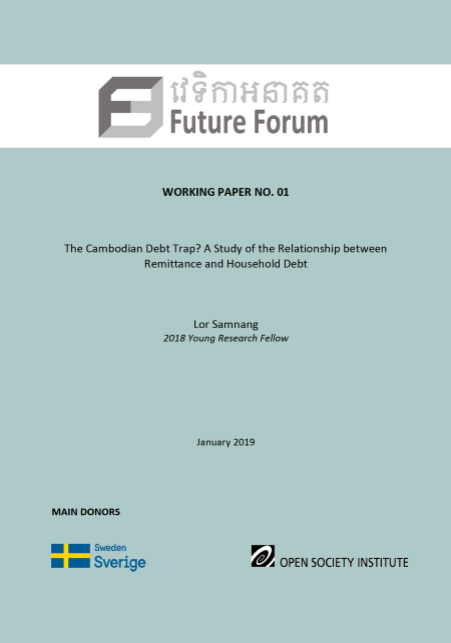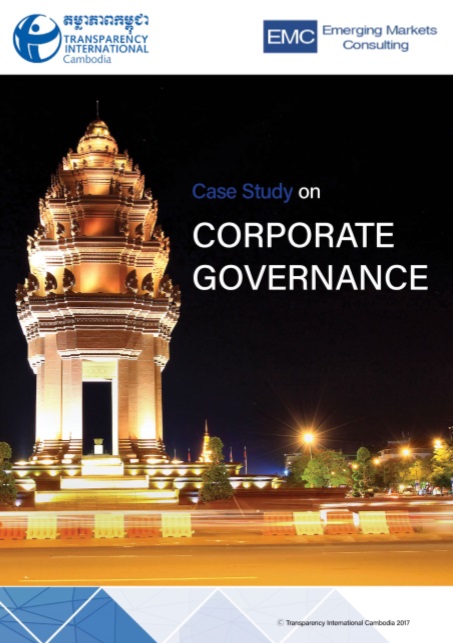
Rapid Assessment on Cambodia’s Mining Policy Framework 2015-2020
Publication Year: 2021 / Sources: Transparency International CambodiaThe rapid assessment on Cambodia’s Mining Policy Framework (MPF) 2015-2020 is conducted by an independent consultant, with support from Transparency International Cambodia and the Highlanders Association in Ratanakiri Province between April and August 2021.
Download: English | Khmer
Policy Brief Development On Development of non-tax revenue (licenses and permits) from the mining sector and its policy implications
Publication Year: 2021 / Sources: Transparency International CambodiaIndigenous Peoples (IPs) in Cambodia primarily depend on natural resources for their livelihoods, such as land, forests, minerals, non-timber forest products (NTFP) and numerous other resources, including mineral resources.
Download: English | Khmer
From Containment to Recovery
Publication Year: 2020 / Sources: The World BankThe COVID-19 pandemic has inflicted multiple shocks on the EAP region: the disease, domestic economic shutdowns, and reverberations from the rest of the world (Figure 1). Today, the domestic picture is positive with qualifications. The pandemic has so far been contained in part of the region, but not in Indonesia and the Philippines, and still threatens other countries, most recently Myanmar (Figure 2). The shutdowns have been mostly phased out and replaced by more targeted measures. However, the international picture is cloudy, albeit with a slim silver lining.
Download: English | Khmer
The Global Competitiveness Report 2019
Publication Year: 2019 / Sources: World Economic ForumGlobalization and the Fourth Industrial Revolution have created new opportunities but also disruption and polarization within and between economies and societies. In this context, the World Economic Forum introduced last year the new Global Competitiveness Index 4.0, a much-needed new economic compass, building on 40 years of experience of benchmarking the drivers of long-term competitiveness.
Download: English | Khmer
CAMBODIA 2040: Vol 1 – ECONOMIC DEVELOPMENT
Publication Year: 2019 / Sources: Konrad-Adenauer-StiftungCambodia has experienced drastic changes since the signing of the Paris Peace Accords in 1991. Twenty-five years later, Cambodia is a lower-middle-income country with consistently high GDP growth rates and concomitant improvements in human security as measured by the Human Development Index (HDI). The question that Cambodia confronts today is a seemingly simple one, but which is in fact remarkably complex: Whither Cambodia? From energy to industrialization to agriculture, how are the diverse sectors of Cambodian society and the Cambodian economy likely to develop over the next two decades?
Download: English | Khmer
Corporate Social Responsibility in Cambodia “A Guide on Practical Implementation.”
Publication Year: 2018 / Sources:Small and Medium Enterprises (SMEs) are an essential component of the
Cambodian economy. In 2017 the Ministry of Industry and Handicrafts estimated
that 152,332 SMEs were operating in Cambodia.1 SMEs are defined by both the
statistical employee number and the financial assets of the company:

The Cambodian Debt Trap?
Publication Year: 2019 / Sources: Future ForumA Study of the Relationship between Remittance and Household Debt
Download: English | Khmer
Case Study on Corporate Governance
Publication Year: 2017 / Sources: Transparency International CambodiaThis case study aims to develop reader with better understanding on corporate governance of business sector in Cambodia.
Download: English | Khmer
Corporate Integrity System (CIS)
Publication Year: 2015 / Sources: Transparency International CambodiaCorporate Integrity System (CIS) is a system that ensure integrity, transparency and accountability for business, corporate, social, environment and labor force.
Download: English | Khmer
Business Sector Brief
Publication Year: 2018 / Sources: Transparency International CambodiaThis report aims to provide reader with insightful knowledge to better understand business sector operation in Cambodia.
Download: English | Khmer